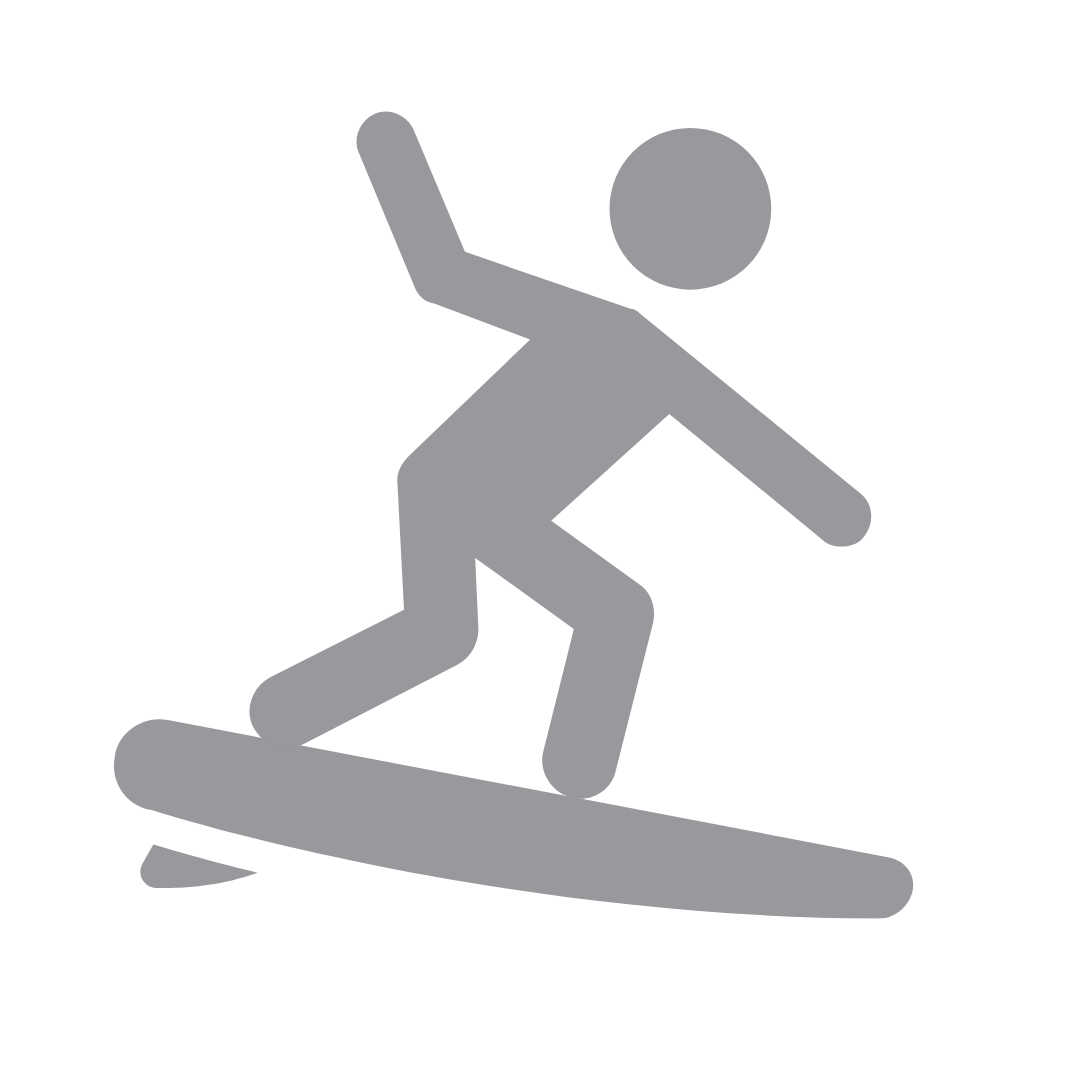Posted by Kasey Schollenberger | 09.26.2023 | Learn To Surf
5 Basics of Surfing Etiquette
A big aloha to all those who have decided to pick up the sport of surfing! Whether you’re the parent of a grom or grommet, or someone giving it a go later in life, we’re stoked for you to join us in the lineup! If you’re reading this, you must be wondering what you can do to make sure you have a safe, enjoyable session in your local lineup. We’re here to help explain the five most important things to know about practicing good surf etiquette, not only to improve your experience but also to ensure those around you feel safe and welcome new surfers into their home break.

Match the surf spot to your abilities – You may see a lot of surfers out next to piers, jetties, or out over shallow sandbars and reefs. These are rarely good places for new surfers to catch their first waves. When selecting a good spot to learn or practice, you generally want to avoid crowds and high-impact waves. If you’re unsure where that may be, ask the lifeguards, or a local surfer, or call your local surf school for advice. As a new surfer, regardless of age, you’ll have a better experience without a lot of experienced surfers around, and it will mean more waves for you to catch! With this also comes knowing how big of waves you or your new surfer can handle, and everyone, no matter how long they have been surfing, can follow a simple rule – if in doubt, don’t go out!
Look both ways – It’s easy to get in the zone and start paddling for as many waves as you can, but it’s important to remember that you may not be the only one going for some of those waves. Understanding wave priority, or right-of-way, will keep you and others safe out in the water. Simply put – as you paddle for a wave, look left then right, just like you would do crossing the street, and see if anyone else is paddling for the same wave. If someone else is paddling, look then for the highest part of the wave or the part of the wave that will break first, known as the peak. Whoever is closest to that peak gets the wave, if that isn’t you then you should stop paddling and wait for the next wave. Nearly ALL collisions between surfers in the water happen because at least one person didn’t look before going on a wave that another surfer already caught. If you’re not sure where the peak is, play it safe and back off to wait for the next one, there are plenty of waves to go around!
Where to sit in the lineup – One of the hardest skills to learn in surfing is positioning in the lineup. A good way to start is to look where other surfers are sitting and try to match their distance from the shore. While paddling that far out may be intimidating, those experienced surfers are sitting in the safest place to be – beyond the wave break. Sitting too close to the shore can put you in the dangerous impact zone where the bigger set of waves will knock you around, or in the way of a surfer’s line down a wave risking a collision. If you are still practicing in the whitewash, or in the smaller waves on the inside, refer to the first rule and find a less crowded spot to get your practice waves.
distance from the shore. While paddling that far out may be intimidating, those experienced surfers are sitting in the safest place to be – beyond the wave break. Sitting too close to the shore can put you in the dangerous impact zone where the bigger set of waves will knock you around, or in the way of a surfer’s line down a wave risking a collision. If you are still practicing in the whitewash, or in the smaller waves on the inside, refer to the first rule and find a less crowded spot to get your practice waves.

Take care of the beach – Surfing is only fun when you have a clean, safe spot to paddle out. A quick way to not being welcomed into your local lineup is by leaving trash, not picking up after pets, or walking through erosion protection areas such as sand dunes. You can go the extra mile by picking up trash as you come off the beach, or by joining your local Surfrider Foundation chapter. The local surfers will notice and will gladly welcome you into their community.
Have fun and be kind – Surfing brings you into a huge community full of surfers from all walks of life who want their lifestyle to be carried on by the generations of new surfers to come. That said, most experienced surfers want to protect their local beaches and lineups from overcrowding, pollution, and people who aren’t kind or surf with no etiquette at all. So, it’s important to not only practice good etiquette but to also be friendly in the lineup. This could mean chatting up the person next to you, giving up a wave to someone even if you had priority, and having a  great time in the surf rather than getting frustrated if you’re still learning the ropes. New surfers who appear to be a good addition to your local surf community will be welcomed and encouraged to keep getting better, those who are rude, don’t learn etiquette, or constantly get upset in the lineup will not. Who knows, being kind may get a local, experienced surfer to share some expertise with you!
great time in the surf rather than getting frustrated if you’re still learning the ropes. New surfers who appear to be a good addition to your local surf community will be welcomed and encouraged to keep getting better, those who are rude, don’t learn etiquette, or constantly get upset in the lineup will not. Who knows, being kind may get a local, experienced surfer to share some expertise with you!
There is a lot more to practicing good surf etiquette, but with these key points, you can hit the waves knowing how to keep yourself and others safe and stoked while in the water. If you want more information on surf etiquette or how to put it into practice, give your local surf school a call and take a lesson with an experienced surf instructor. There’s no better way to get a jumpstart on your wave-riding journey. Happy surfing!
-Chase O’Briant, Program Coordinator







 RENTALS
RENTALS LESSON
LESSON CAMPS
CAMPS ABOUT
ABOUT SHOP
SHOP